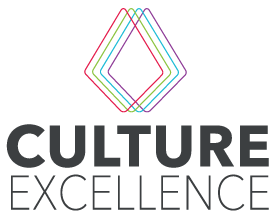Case Study: OSI
OSI is a global food supplier, where customer and consumer trust is built on a long-standing reputation of producing and supplying safe, high-quality food products.
As a premier global food provider, the OSI Group partners with the world’s leading foodservice and retail food brands to provide concept-to-table solutions that delight consumers around the globe. With the infrastructure and financial resources of one of the largest privately held food providers, OSI offers extensive capabilities to source, develop, produce and distribute custom food solutions anywhere in the world.
OSI has worked with Culture Excellence since 2017 assessing their food safety culture across the company’s 57 global locations.
In this case study they shared their objectives, survey results and the top 3 changes that made a difference.
Food Safety Culture Objectives:
Engage and align employees around a culture where food safety is central to individual and company success
Package food safety communications in a way that promotes consistency across all locations while allowing for local customization
Employer leaders to drive awareness, acceptance and engagements with employees
Measure with engagement surveys, promote the improvements and identify the gaps
Culture Excellence survey results: positives and strengths
Increase in survey participation
A positive culture yields engaged employees
Improved the overall global score
19 of 20 dimensions showed an improvement in the score
Modest improvements show a stable culture that is strengthening positively
Strength on management and what they can do
Culture led Top Down can affect meaningful culture change, results confirm strong leadership
Synergy between vision, strategy and how people perceive senior management is a big strength
Communicating effectively the strategy, vision and that food safety is part of the vision
Senior management values food safety very highly
Culture Excellence survey results: opportunities
To embed a culture of food safety in the hearts and minds of every employee
Frequency of management training (once per year):
Managers moving away from traditional training - observing different department, a workshop day, a black belt project are all considered training beyond classroom
Train in people skills to disseminate information to the rest of their teams would amplify the strong management perceptions already in place
Action: Created and launched scenario-based food safety training for all connected employees - required to be completed each year
IT equipment and software are up-to-date (OK, but needs improvement):
Action: moving towards more digital applications
Knowledge of the Company’s vision and strategy (Partially informed)
Action: each area of the world now holds quarterly “Town Hall” meetings
Top 3 changes that made a difference
Monthly food safety strategy discussions:
Important food safety topics, KPI’s associated with the topic, freeing up resources, directing investments, educating leadership on emerging topics
Food safety KPI’s:
Standarized data, global inputs, large data late for work in predictive actions, drives discussions, continuous improvement
Inclusion:
Directly engaged in investments, FS near miss digital platform, daily operations meetings, monthly regional KPI discussions
Reference: Campden BRI (2023), Culture Excellence 9th Annual Seminar






